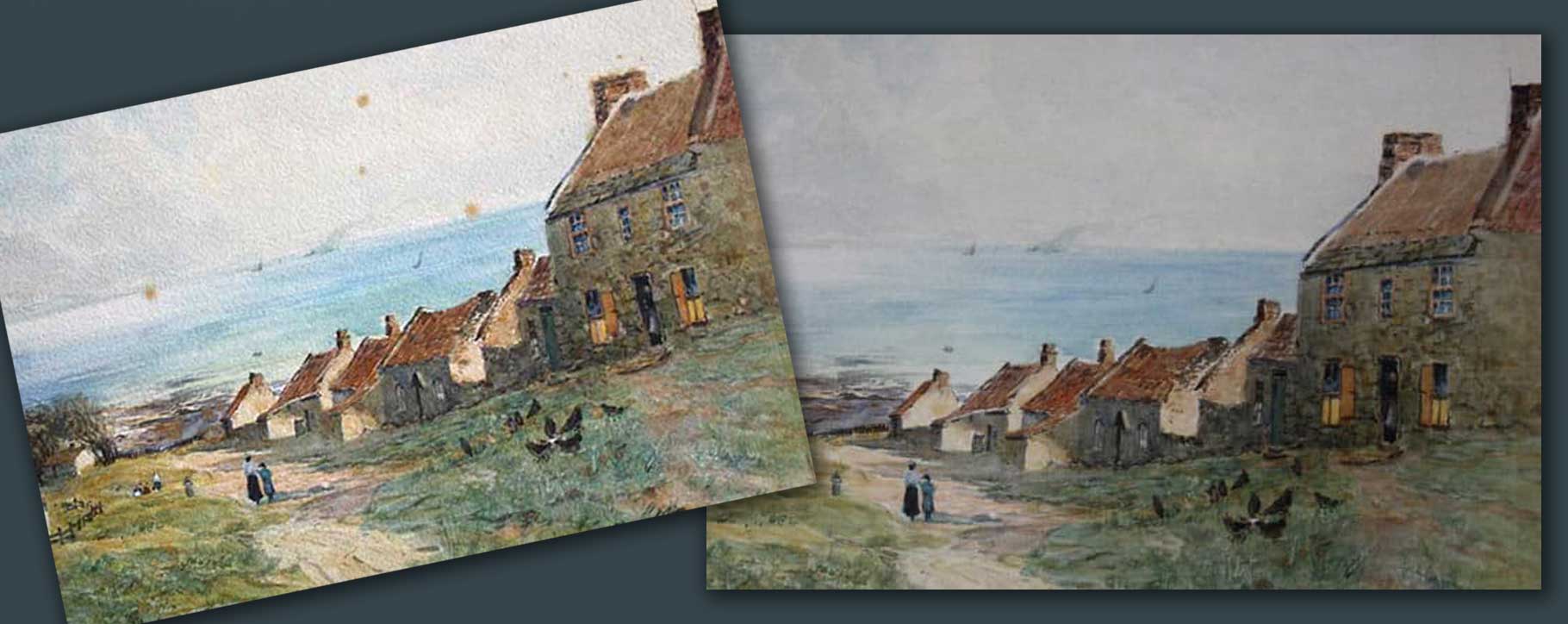Even when a watercolour is completely covered in marks, there is always something that can be done. You’d be forgiven for thinking when you see the before photos below that these artworks can be successfully treated. But they can – and they have been!
Take a look below at eight recent watercolour restorations and their before and after photographs. Find out what had happened to them and how our conservators worked their magic…
Ponies, 1966
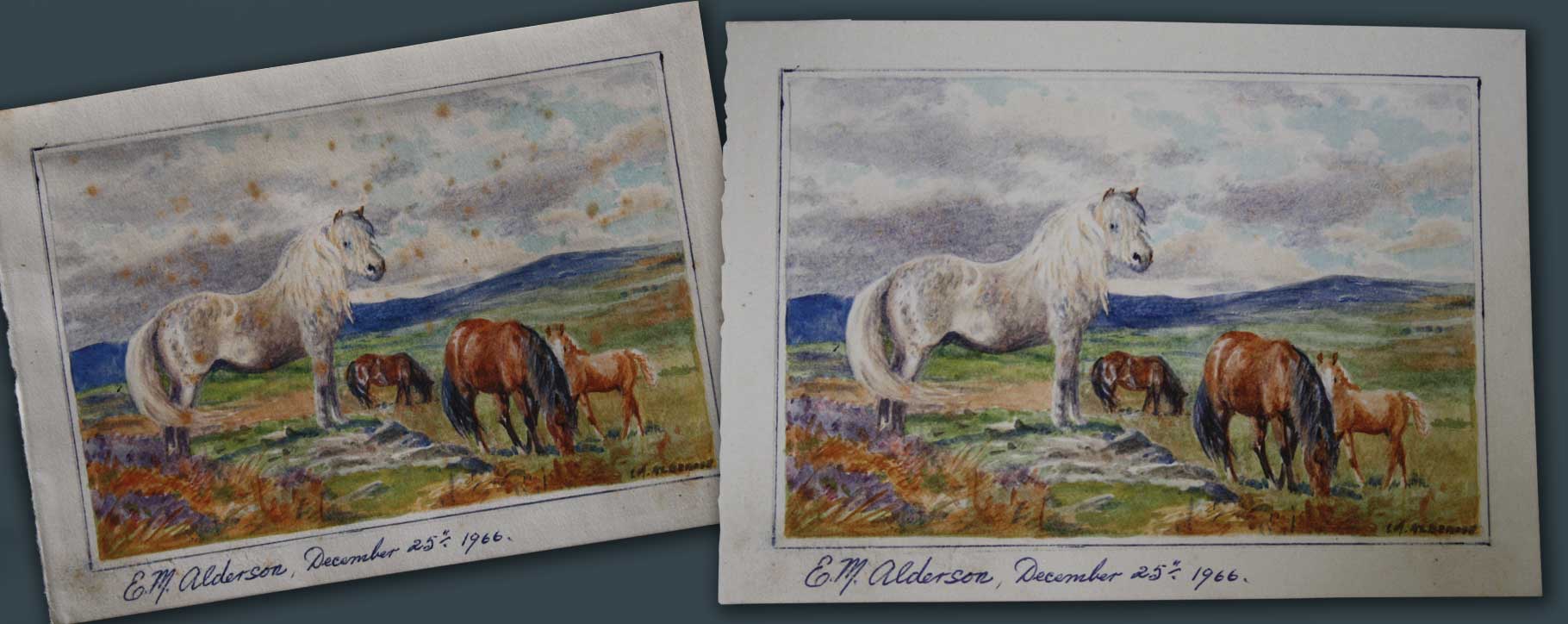
When moisture in the atmosphere reacts with impurities and mould spores in the paper, spots appear on an artwork. They are normally rusty brown spots (although sometimes lighter), and are known as foxing. Such widespread marks can greatly ruin the appeal of an artwork.
The foxing spots for this watercolour were very noticeable in the light sky and really stood out against the white clouds.
We restored these two watercolours by removing the previous inappropriate backing, surface cleaning, and treating the foxing. As you can see, the foxing has been successfully removed from the painting and the result is a much cleaner, fresher and healthier artwork.
Although the lightness of the pigments emphasised the reddish marks across the painting, it also helps to show the wonderful difference achieved from this restoration.
For more information read our helpful article on How To Treat Foxing in Watercolours.
E. McClelland
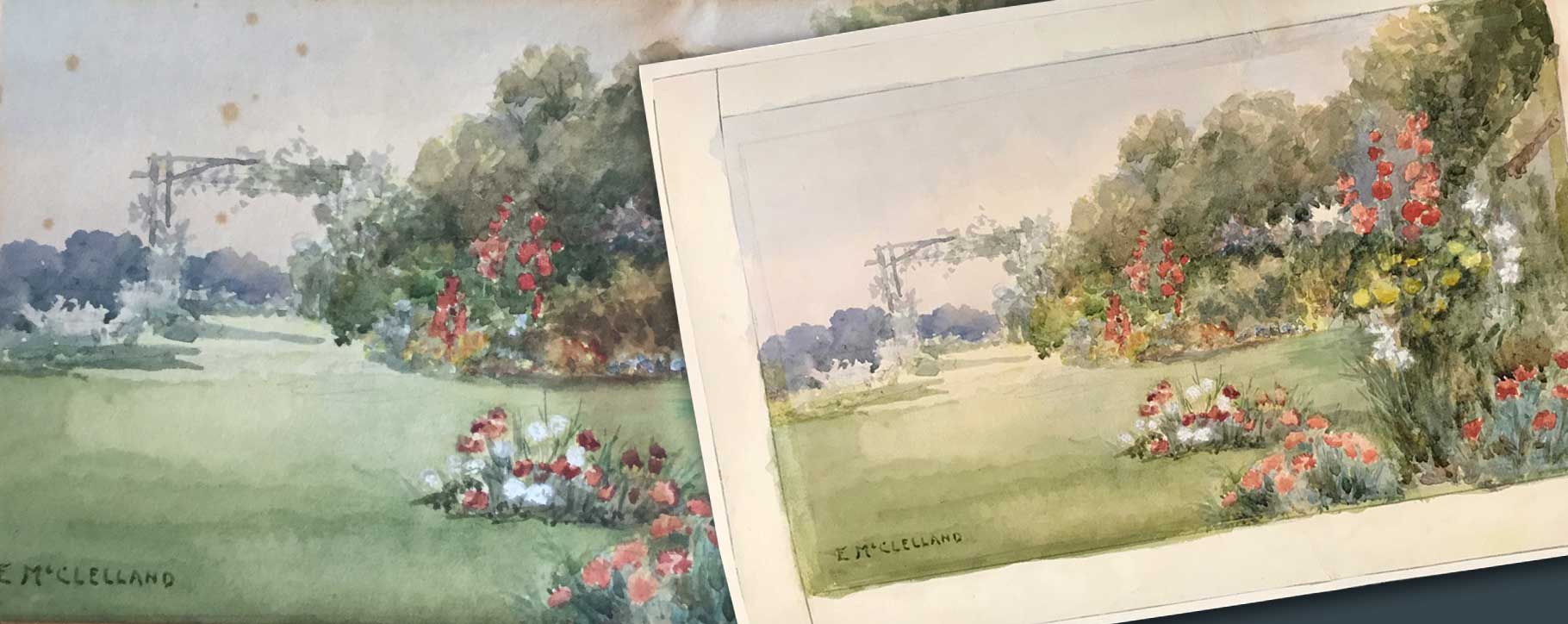
For this delicate watercolour by E. McClelland, the painting was suffering from foxing and acid staining leaching through from inappropriate backing materials.
The foxing spots are deep reddish-brown, as is the staining. The painting is a very calm garden scene with blooming flowers, which was deeply at odds with the foxing flare-ups and heavy acid staining running vertically down the painting.
Our recommendations included gentle washing in our solution to address the foxing and staining, while also lifting dirt and contaminants. The backing materials were also removed and replaced to stop the painting from being further acid-damaged.
When we carefully wash watercolours in our cleaning solution, the artwork is never at risk of the colours and pigments running or fading. Just as with oil paintings, we conduct tests on watercolours to check their suitability for undergoing this kind of treatment.
Our client was delighted with the results of the restoration, and how much brighter and stable the painting had become.
For more information, read our helpful article on Cleaning Watercolour Paintings.
Thomas Tayler Ireland
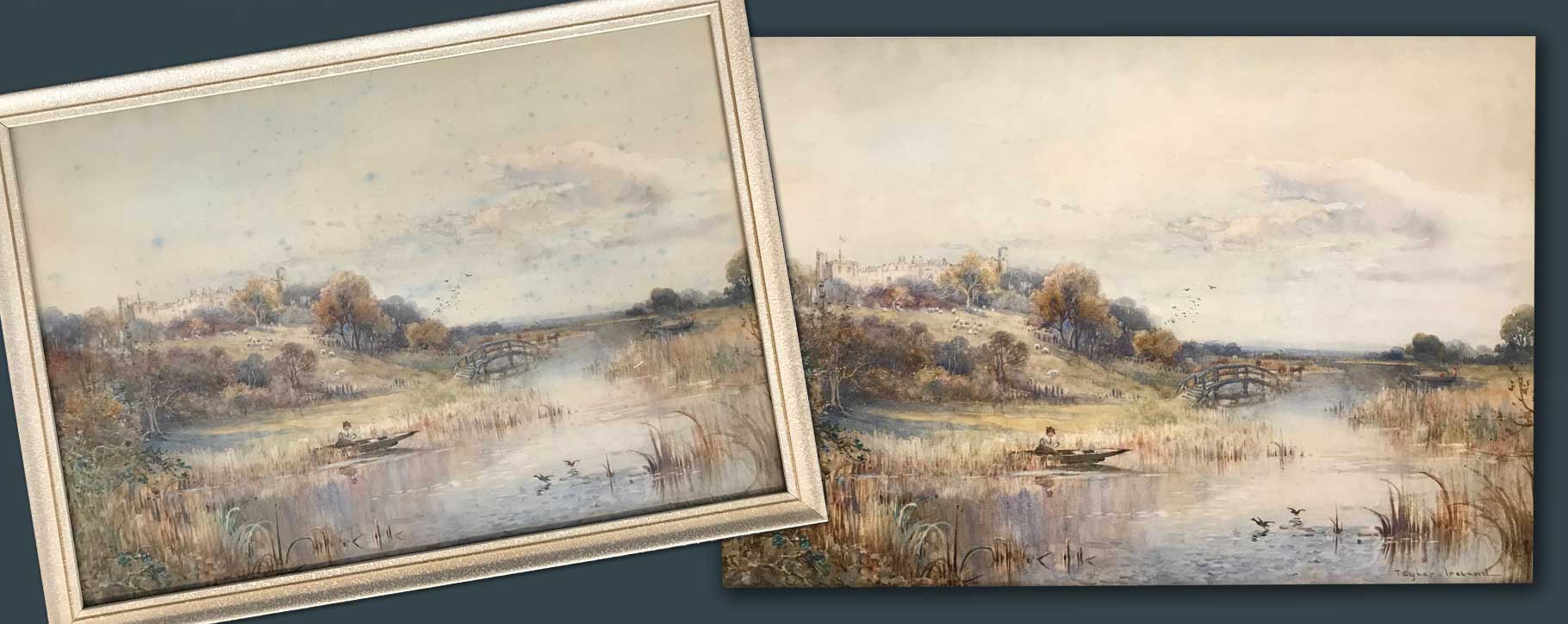
This watercolour by artist Thomas Tayler Ireland was treated for substantial foxing across the painting, which was most evident in the light sky.
Foxing usually shows itself with rusty reddish-brown spots (hence the name) although as with this painting sometimes it can be lighter.
We restored this watercolour by removing the previous inappropriate backing, surface cleaning and treatment for the foxing. As you can see, the foxing has been successfully removed from the painting and the result is much cleaner, fresher and healthier artwork.
For more information read our helpful article on How To Treat Foxing in Watercolours.
Watermill
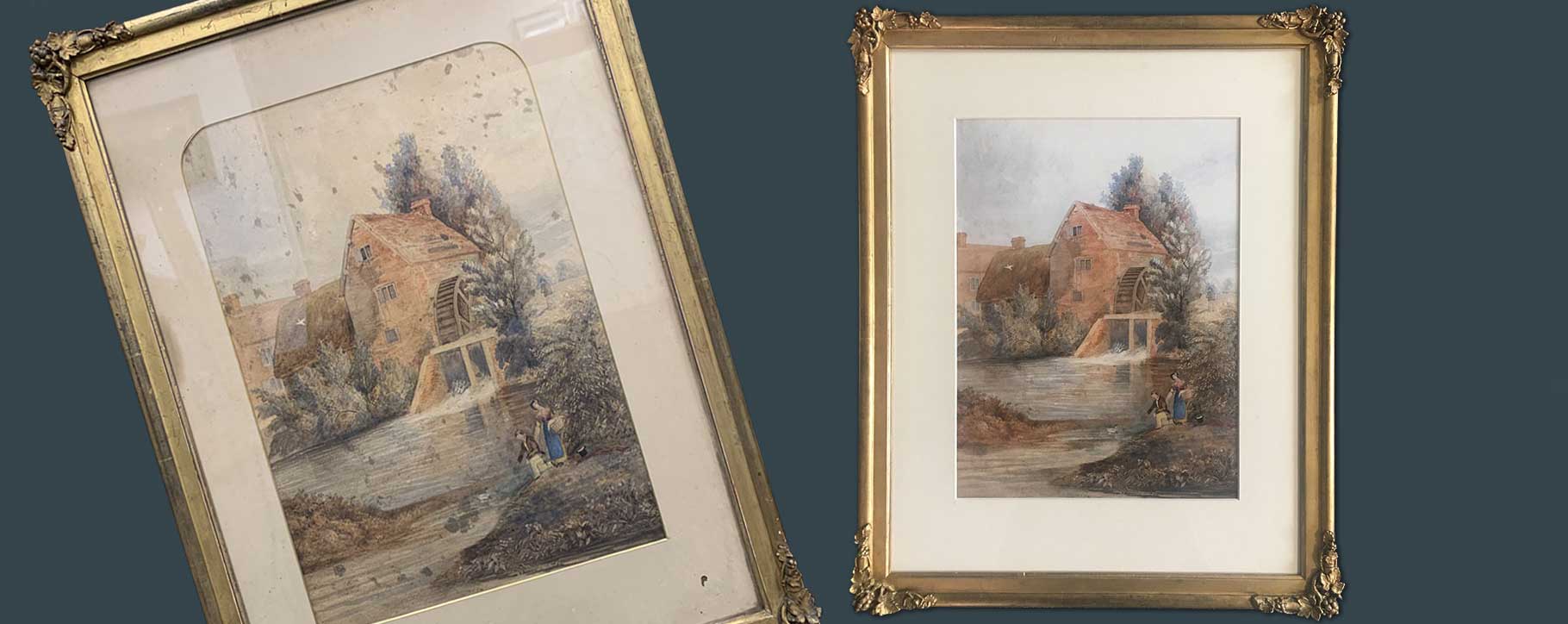
This cottage scene was suffering from foxing and staining also and required a clean to remove the dirt and contaminants.
After gently washing the watercolour in our solution, the marks and staining that were marring the artwork were successfully dealt with and removed.
We also replaced the mount, which was contaminated and stained. For the majority of watercolour restorations we carry out, the backing materials including mount board will always be replaced. This is because they have ingrained acidic properties that will only ever cause more harm to a painting. Even when restored, placing a painting back in its original backing materials will cause the need for restoration again. When we re-mount a watercolour, we use conservation-friendly museum boards which offer the best protection and support.
Winter landscape with sheep

This winter landscape was no longer a winter wonderland but had instead turned reddish-brown due to foxing.
As with the other paintings detailed here with foxing, we gently washed the watercolour in our solution, addressed the foxing and associated staining.
We likewise replaced the mount (which was contaminated with acid) and re-installed the artwork appropriately.
As you can see in the after photograph above, there is no trace of the painting ever having had foxing – another seamless restoration!
Coastal scene
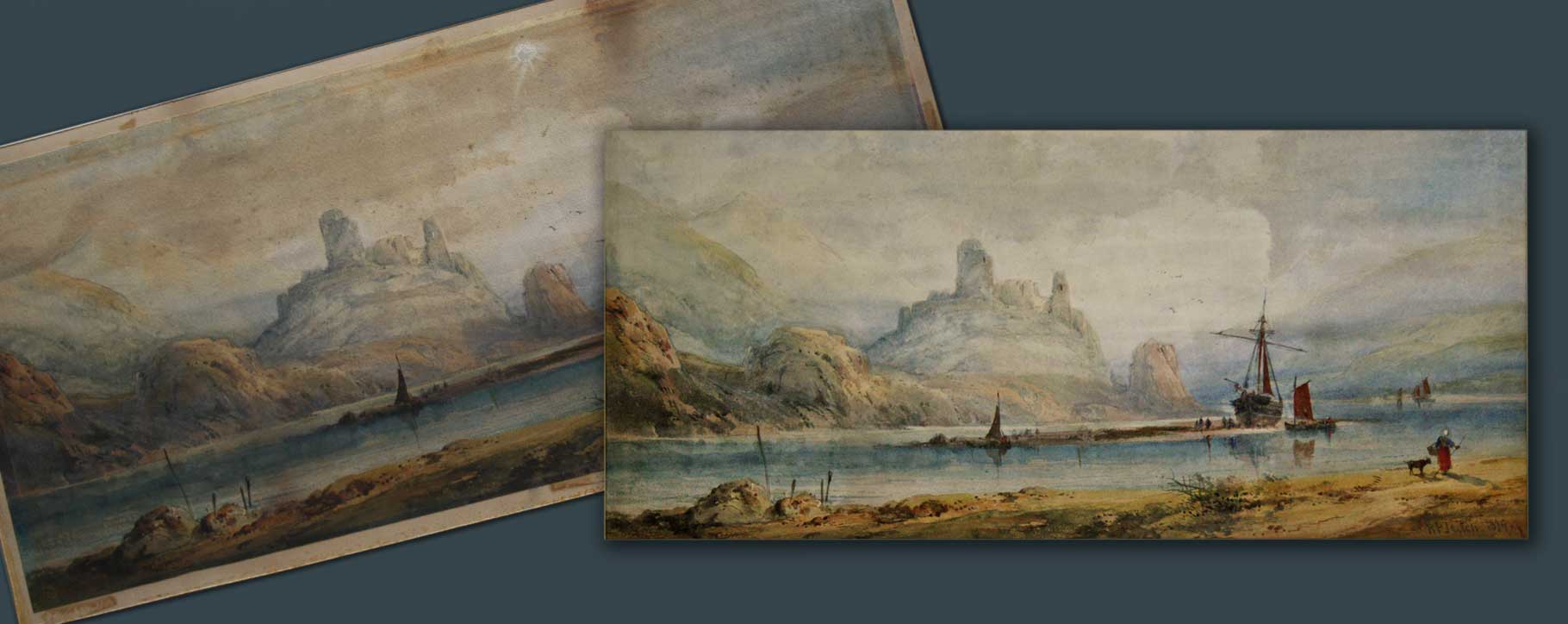
This coastal scene painting suffered from foxing, partly due to contact with glass, but mainly because of the degraded backing. The painting also had woodworm holes but thankfully no active infestation.
We recommended to our client that the backing board was removed and we advised cleaning the painting to remove the pollutants, treating the foxing, repairing and retouching the insect holes, and relining if necessary.
Relining a work on paper is much the same as the process for oil paintings; a new conservation standard paper backing reinforces the original artwork. This becomes essential if there are areas of the artwork with tears or holes and the structure is compromised.
You can read more about repairing holes in our article How to Repair Tears in Watercolours.
There were multiple treatments needed to stabilise and secure this artwork, and our client was delighted with the finished result.
The painting has been comprehensively conserved so it can be enjoyed for the years to come.
Coastal houses
As with the above painting, the foxing was most evident in the sky and against the clouds.
Thankfully in this instance, the foxing had not shown itself on too substantial an amount of the painting, but whether there are three obvious foxing marks or thirty, it is important to treat the whole of the painting regardless.
Cleaning the painting and treating the foxing worked wonders on this delicate watercolour, and it was fantastic to return this painting back to our clients fully restored and stable.
For further insight into treating foxing, you can read our advice on how it is treated in our helpful article.
If you think your watercolour may have foxing or you would like further advice, contact us for our obligation-free help.

